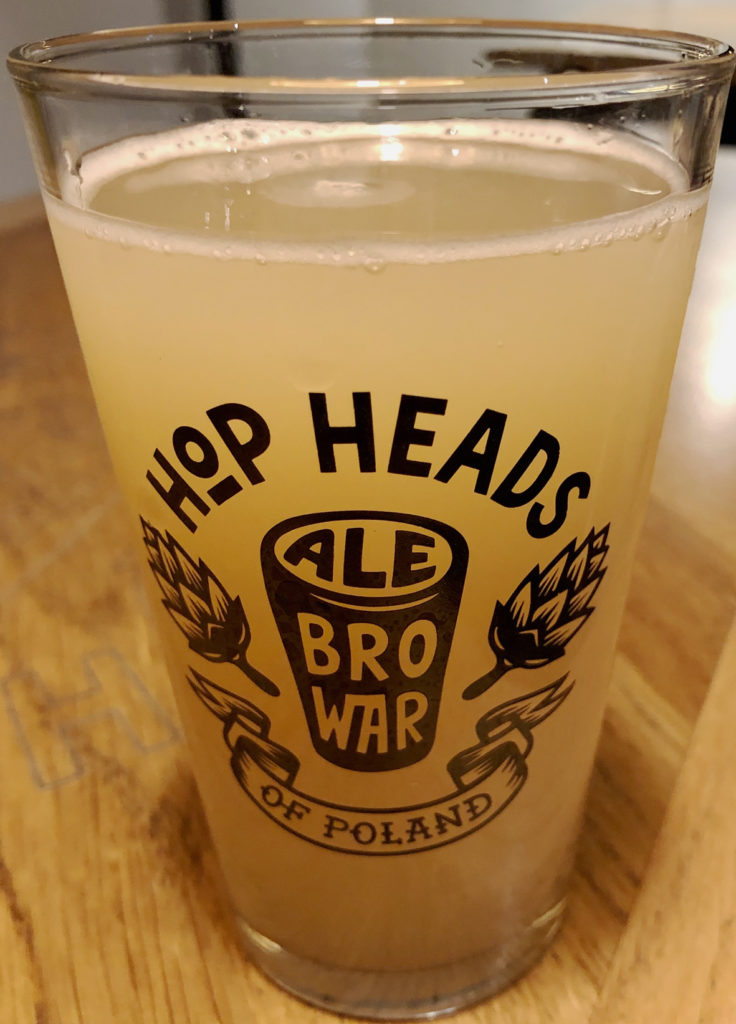
This is a glass of something called Herr Axolotl, from Ale Browar of Poland, bought in a bar in the charming city of Wrocław. It is described as a Berliner Weisse with guava. I struggled very hard to find anything at all about it that might deserve the name “beer”. It looked like cloudy apple juice. It tasted a lot like very sour cloudy apple juice. It certainly didn’t taste as if it had ever been in the same postcode district as a hop. As I went further down the glass, there was something nasty lurking in the background, harshly sharp and unpleasant. I have become Old Man Yells at Cloudy Beer.
 Nine days in Poland, on a return visit four years after I first travelled to the country to check out its craft beer scene, involved meeting large numbers of friendly, enthusiastic Polish craft brewers, beer geeks and bar owners and drinking considerable quantities of beer in an expansive range of styles, almost all of it of it well-made, some of it absolutely fascinating, rare and thrilling, and some of it pushing the envelope so hard it rips. I used to think I was on the far-left libertarian wing of the beer world, able to accept pretty much anything brewers came up with. But after walking into several Polish craft beer bars, looking at the menu on the wall, filled with opaque sours, fruit ales, vanilla ice-cream IPAs and the like and wondering if I should ask: “Um – do you have any beer-flavoured beer?”, I realise that I’m not actually as liberal as I thought, and that there is a line which, once crossed, I find myself saying: “You may be a brewer, but that’s not a beer.” Too many brewers, it appears, are chasing novelty at the expense of a decent drink.
Nine days in Poland, on a return visit four years after I first travelled to the country to check out its craft beer scene, involved meeting large numbers of friendly, enthusiastic Polish craft brewers, beer geeks and bar owners and drinking considerable quantities of beer in an expansive range of styles, almost all of it of it well-made, some of it absolutely fascinating, rare and thrilling, and some of it pushing the envelope so hard it rips. I used to think I was on the far-left libertarian wing of the beer world, able to accept pretty much anything brewers came up with. But after walking into several Polish craft beer bars, looking at the menu on the wall, filled with opaque sours, fruit ales, vanilla ice-cream IPAs and the like and wondering if I should ask: “Um – do you have any beer-flavoured beer?”, I realise that I’m not actually as liberal as I thought, and that there is a line which, once crossed, I find myself saying: “You may be a brewer, but that’s not a beer.” Too many brewers, it appears, are chasing novelty at the expense of a decent drink.
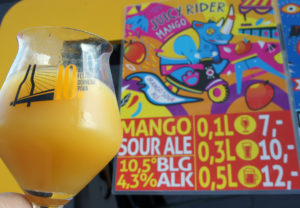
Much of the reason for this realisation arriving in Poland rather than, say, Hoxton comes from the fact that the Polish craft beer scene is driven far more, I think, than other countries’ by novelty, which in itself is an artefact of the fact that the Polish craft beer scene is hugely enthusiastic but tiny – still less than one per cent of what is, admittedly, the third biggest beer market in Europe – which itself is down to the cost of craft beer compared to mainstream beer. A 50cl bottle of Tyskie is three or four złoty, when it’s 4.8 złoty to the pound. A bottle of craft beer is four times more expensive. Poland is still not a rich country, and most people can’t afford craft beer. Meanwhile those craft beer drinkers who do exist want something different every time they go up to the bar, which puts pressure on bar owners, who put pressure on brewers, who are aware enough about what goes on in places like the US to use trends such as New England IPA and barrel-ageing and souring and fruit beers to come up with an ever-changing variety of new products flowing from the fermenting vessels.
I was lucky enough to visit Browar Palatum, now three years old, the only proper brewery actually in Warsaw, a city of 1.8 million people, where the owner, Łukasz Kojro, told me he makes more than 300 brews every year, each one different, because that’s what the market demands. Almost all of Palatum’s production is draught – the brewery has only a small hand-bottling side – and Łukasz is able to sell all he makes across Poland, even though the market is comparatively so small, and there are now some 250 actual craft breweries open and another 150 “cuckoo” or contract brewers using other people’s kit. Something helping Polish craft brewers is that because of the price problem, there is very little craft beer imported into Poland from outside: it’s too expensive.
But constantly having to think up new beers means that, inevitably, you’re going to get some that aren’t beers at all: at least not beers according to the definition I now find myself formulating after my Polish experience. This is, of course, pretty majorly subjective, and based almost entirely on what I like about beer and why I drink it, but it does have some grounding in measurable facts. A hopped cider, for example, is not, I hope, by anybody’s definition, a beer: nothing wrong with hopped cider, I’ve drunk some and it was good, but no grain, so not a beer. Similarly, just because it contains grain and hops, that doesn’t make it a beer automatically: if you can’t taste either grain or hops in the glass then I am very reluctant to call it a beer. If it tastes mostly of fruit juice, if you’ve put 600kg of mango into the fermenting vessel, as one Polish brewer boasted to me, then what you’ve got is fermented mango, that is, fruit wine, and not beer. If you drink it and enjoy it, fine, but I reserve the right to say: “No thanks, I like drinking beer.”
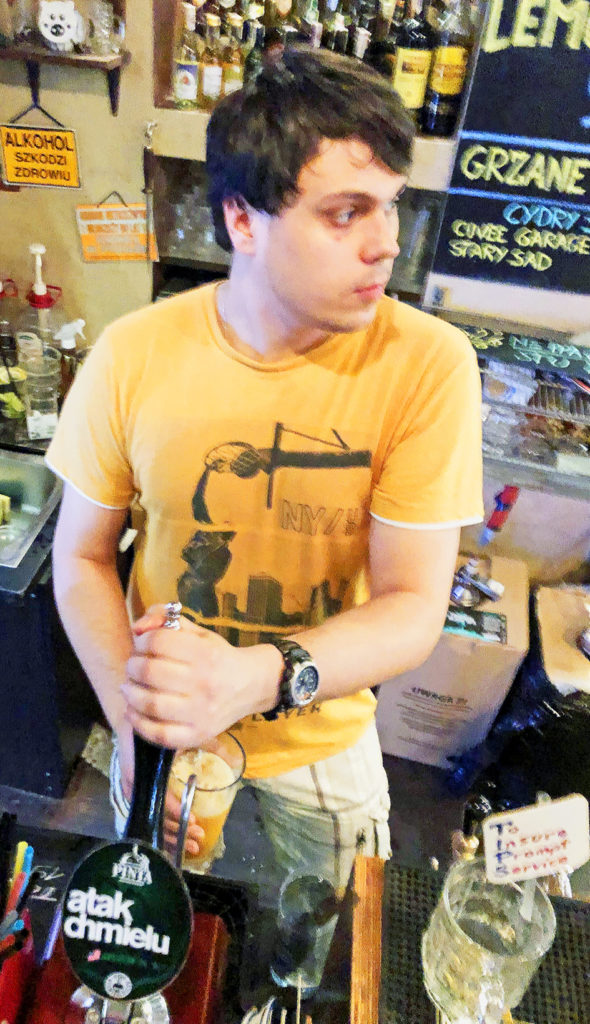
Let us not, however, give the impression that the Polish craft beer scene is entirely the preserve of the wild and the weird. There are plenty of straight-up, solid brews, from very good pilsners to fine pale ales. I particularly enjoyed reacquainting myself with the Pinta brewery’s Atak Chmielu (Hop Attack), 6.1 per cent abv, 69 IBU which was the first ever commercial “Polish craft beer”, in 2011, and which, when it appeared, blew every Polish beer drinker’s socks off their feet and away over the horizon. It’s now venerable enough to be described as “old-fashioned” after only eight years, but it’s an excellent American pale ale, and a safe call in any bar selling it while you contemplate what weirdness to try next.
Pinta, based way down in the south of Poland, 40 miles south-west of Krakow and 11 miles from the Slovak border, has grown from being a contract brewer to one of the largest independents in Poland and one of the thriving stars of Polish craft beers, along with Stu Mostów (“Hundred Bridges”) and Profesja of Wrocław, both of those only five or so years old, both, like Pinta, producing very well-made beers.
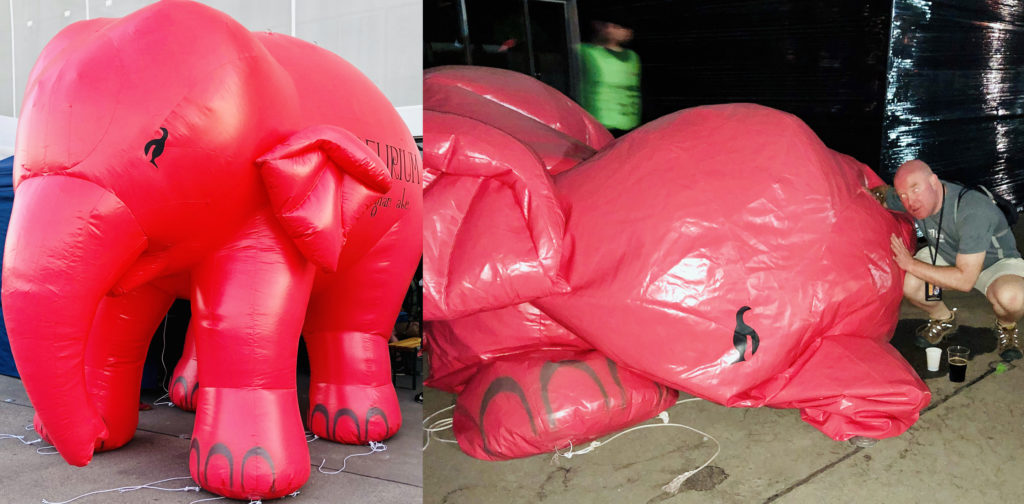
There are newer brewers doing impressive stuff too: Cześć Brat! (which means Hello Brother!, and which, surprise, is run by brothers Grzegorz and Michał Malcherek in the town of Jelcz-Laskowice, 15 miles south-east of Wrocław), for example. You’ll find one or two handpumps tucked over in a corner in many Polish beer bars, and one of the beers I kept finding being served on handpump when I was there was Cześć Brat’s 4 per cent abv tonka bean milk stout, Coś na Wieczór?, which means “Something for the Evening?”. Interesting beer flavouring, tonka beans, they contain a big hit of coumarin, which gives a similar taste and aroma to woodruff, and they’re also quite bitter, which in this case nicely counteracts the sweetness of the milk stout. (Cześć Brat!, as an aside, is another Polish brewer with terrific graphics, produced by a well-known Polish graphic designer: the brothers loved her work and wrote to her saying: “We’re only a small, poor brewer, but what do you charge?”, and she wrote back saying: “I like the idea of working for a brewery, so I’m not going to charge you very much at all.” Don’t ask, don’t get.)
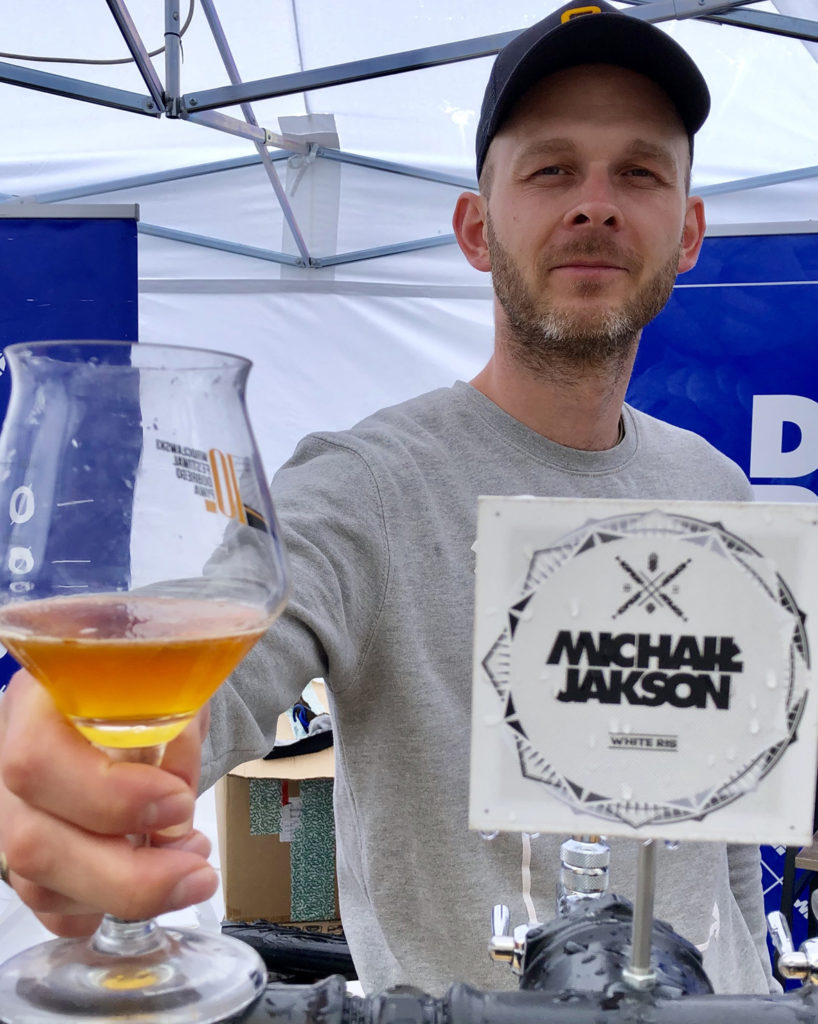
The Hopium brewery, from the village of Nowy Drzewicz, south-west of Warsaw, won my unofficial prize for “best beer name of the Wrocław beer festival”, with Michaił Jakson, a “white Imperial Russian Stout”, not, you’ll conclude, a nod to the late beer writer. The beer was a bit of a Thriller, too: a strong (8.5 per cent abv) pale ale with coffee infused in during maturation, which I wouldn’t have expected to work had I not tasted it and enjoyed it. Hopium gives all its beers “celebrity pun” names, such as Al Apacino, an APA, Danny De Wheato, and Kwasko Da Gama, a fruit sour ale, kwas, pronounced “kvas”, being the Polish for “sour”. Quite a few of the beer names are puns on Polish celebrities unknown across the Oder, which puns obviously don’t travel. At least one, a mango fruit ale called Vincent ManGogh, is based on a mispronunciation I couldn’t bring myself to tell them about (for Americans reading this, it’s Van GOFF, not Van GO).
The beer I was most thrilled to discover, though, was one I had travelled to Poland specifically to find: Jopejskie, a revival of an obscure, strange, fascinating Polish beer style, more than 500 years old, which, bizarrely, was brewed in the North of England under the name Black Beer until 2013. I knew the Polish contract brewer Olimp had a version on sale in 100ml bottles, but as I wandered the Wrocław festival, where the 50-plus stalls are almost all run by the brewers themselves, I spotted that the Świdnica brewery, from the town of the same name some 30 miles south-west of Wrocław, was selling Jopejskie on draught – at 35 złoty (£7.30) for 10cl, when other beers were 10 to 13 zloty for 50cl. To save you turning on your calculator, that’s 13 times more expensive, and the equivalent of £41 a pint!
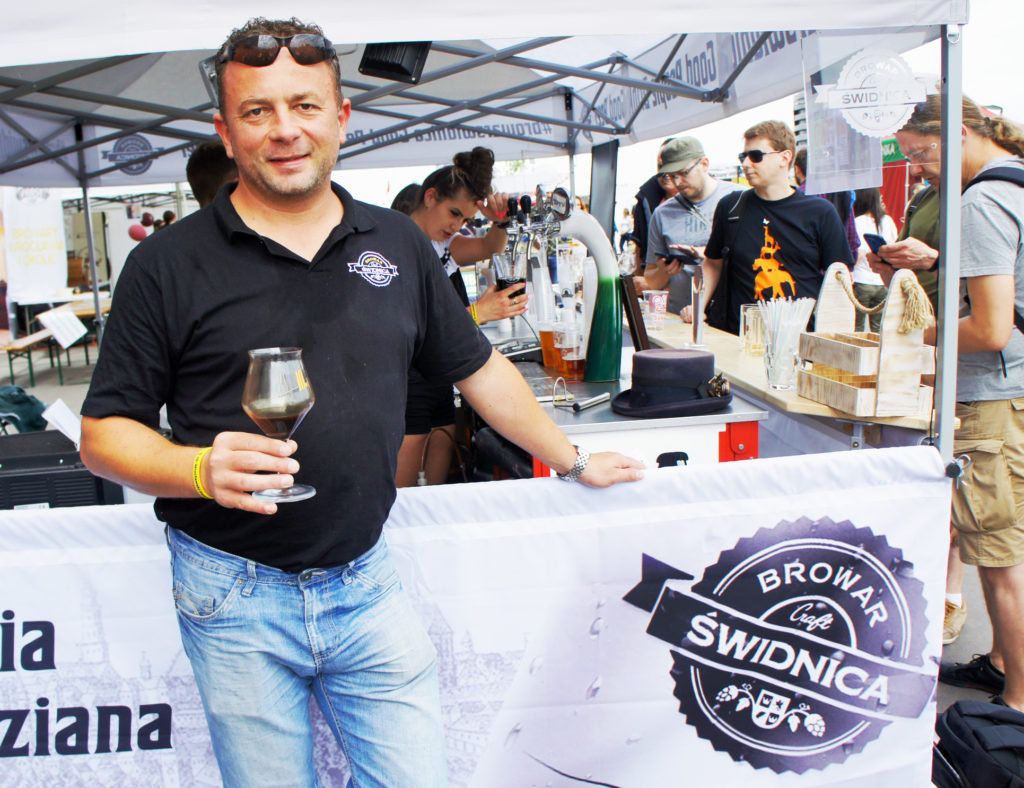
Not that you could possibly drink even half a pint: it was “only” 9 per cent abv, but had started out at a barely believable 50º plato, which if my maths is right is all of 1233 OG, and suggests a FINISHING gravity of around 1164, higher than almost all other strong beers begin at. Olimp is apparently very secretive about how it brews its Jopejskie, but Rafał Harchala of Browar Świdnica was entirely happy to tell me all: he starts with a strong Russian Imperial Stout wort and then boils it for 24 hours (24 hours!), to end up with something closer to tar than wort. This is then pitched with a standard lager yeast – the well-known 34/70, I believe – and left until the lager yeast cells wave the white flag, after which the brew remains in an open vessel for any wild yeasts to have a go if they think they’re hard enough. Finally the beer is kegged: the batch at the festival had been made in October last year, and was thus eight months old..
Even the wildest of wild yeasts eventually give up, however, and what is left is still sweet and treacly – and delicious. I confess to a tingle in my feet when I drank this: liquid history, chewy, powerful, filled with dark, deep flavours, simply fabulous. One of my best beer experiences of the past few years. Later I managed to find the Olimp version on sale in a shop in Krakow (39 złoty per 100ml bottle: I saw it in a bar for 49 złoty), and a very kind Polish-based home brewer, Tomasz Spencer, gave me a bottle of his home-brewed Jopejskie. So that’s three different versions of a beer I never thought I’d see: amazing.
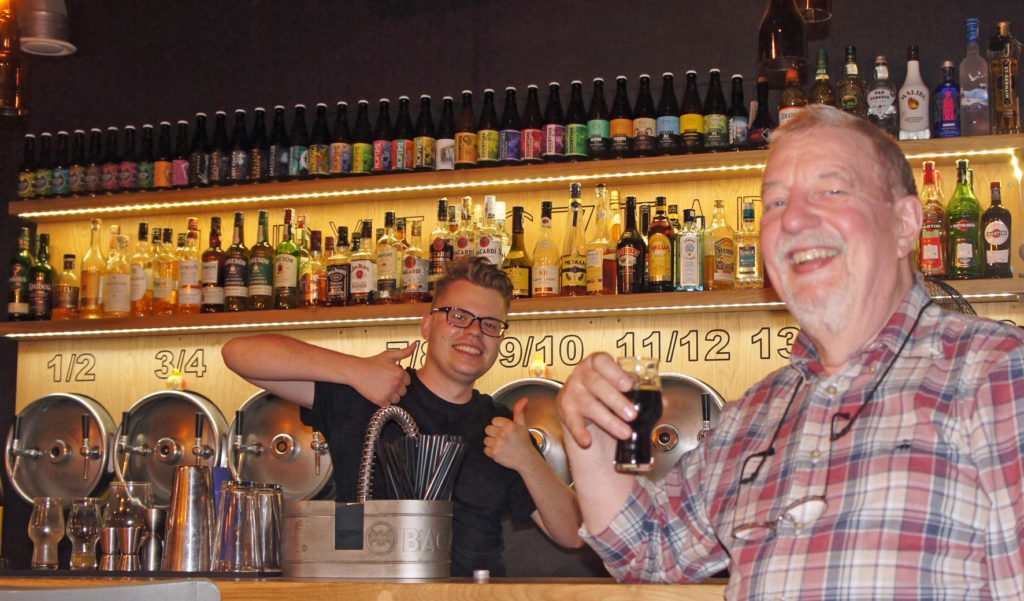
There were some disappointments, and ironically the worst beer I had was in a brewpub in Krakow that claims to brew the finest British-style cask ale. Michael Jackson (the beer writer, not the inspiration for a white RIS) held to a philosophy that it wasn’t his job to be unpleasant to people, but to encourage everybody, so perhaps it might be kindest to draw a discreet bartowel over these failings. But frankly, if you’re selling a “cask-conditioned bitter” you call “England’s Glory” to Poles, it really needs not to taste of unfermented wort and lack all condition. I tried the porter, to see if this was just one poor cask, and it was barely better: thin, little condition again, sweetcorn on the nose and something nastily sharp lurking in the background.
But apart from that, I had a terrific time: if you like beer tourism, Poland is now an absolutely must-visit destination. The Wrocław beer festival, outside the football stadium a tram-ride from the city centre, is one of the best in Europe, well-organised, a great selection of dozens of different Polish breweries, and a fine range of Polish street food to mop up the beer. The beer bars, in Krakow and Warsaw in particular, are almost uniformly excellent, and if the selections of beers are almost entirely Polish, well, those beers are good enough, and varied enough, that you won’t miss anything. Among the places I particularly enjoyed were Hoppiness, in the aptly named Chmielna (“Hop Street”) in central Warsaw and Maryensztadt in Warsaw Old Town; and Omerta in Krakow.
Many thanks to the guys at Crookham Travel for organising the travel around Poland and brewery trips in Wrocław and Krakow, and Tony Fox-Griffiths in particular for his impeccably researched guides to bars in those two cities; to Tomasz Kopyra and the crew at Festiwal Dobrego Piwa for the free beer and hotel accommodation in Wrocław (and more brewery trips); and to Tom Spencer for giving up his time to take me on a bar crawl of Warsaw. and organising yet another brewery visit. See you all again soon, I hope.


I’m guessing Jopejskie is Danziger Jopenbier. A beer I often use an example of historical craziness. I’m dead jealous that you fot to try it.
Van Gogh was Dutch. Hence, pronounced van gog. Not goff, not go.
If you’re British it’s more like ‘fahn hoakh’ AIUI – where ‘kh’ is a consonant you think you can’t pronounce if you’re British (although it’s the ‘ch’ in ‘loch’ – and also in ‘chmiel’, getting back to Polish).
“It’s not beer if it doesn’t taste like hops and/or barley were involved” is a bit subjective – and also a bit broad; where would it leave Berliner Weissbier or lambic? “It’s not beer if fermentables other than grain (and possibly sugar) have been involved” might be a runner, though (and that mango thing does sound particularly crazy).
‘“It’s not beer if it doesn’t taste like hops and/or barley were involved” is a bit subjective’ – indeed. And I say so.
‘and also a bit broad; where would it leave Berliner Weissbier or lambic?’ Both of those taste of malt and hops.
There are now a (small) number of Polish breweries making something they call Jopejskie/Jopenbier with varying degrees of authenticity (Weihenstephan 34/70 is not something I would class as authentic). I was most intrigued by the news that it had been revived in Gdansk itself, by what is for my money the city’s best brewery, PG4. I wanted to write about it but unfortunately the brewery hasn’t got around to answering my email yet.
Sadly, I don’t think PG4 made it down to the Wrocław festival, and I didn’t see it on sale anywhere, only Olimp’s. Authentic or not, I thought the Świdnica version was a very fine beer: I preferred it to the Olimp version.
Hi Martyn.
in the note the wrong information crept in, the yeast I used was “In 34/70” – lager yeast not Weihenstephan.
Best Regards
Rafał
Apologies for that – corrected.
[…] Old Man Yells at Cloudy Beers.In one branch of the abomination thread above, Martyn Cornell writes, “Change for the purposes of […]
[…] Old Man Yells at Cloudy Beers. In one branch of the abomination thread above, Martyn Cornell writes, “Change for the […]
Believe me, people in poland have the money for craft beer. The reason why it is niche is that not everyone understands such ideas. Especially why “good old beer” for 3 zloty is worse than the “weirdly tasting” for 8 or 15 zlotys.
[…] wild fermented and then barrel-aged. You can read what he thought of it in his account of the trip here. I was less impressed. It tasted like hot autolytic gravy to me, like paradoxically savoury […]
[…] Slavic former neighbours have not lost their dab hand with a spot of grey liquid stone. Martyn also reported on the event and associated opportunities and found “the selections of beers are almost entirely […]
[…] IPAs and other beers that are beers in name only is nothing new. You might say its yelling at a cloud. Or, perhaps it’s screaming into the, uh, blank space. But, it’s important to maintain […]